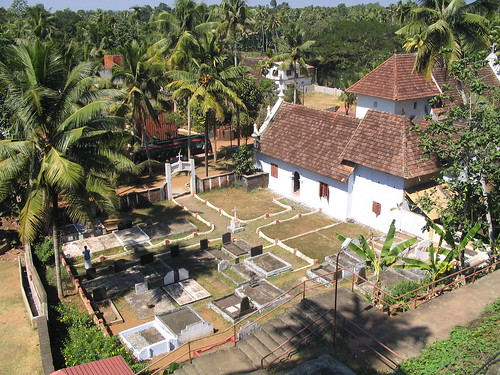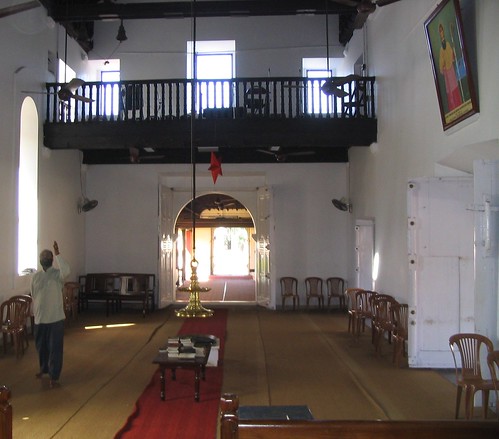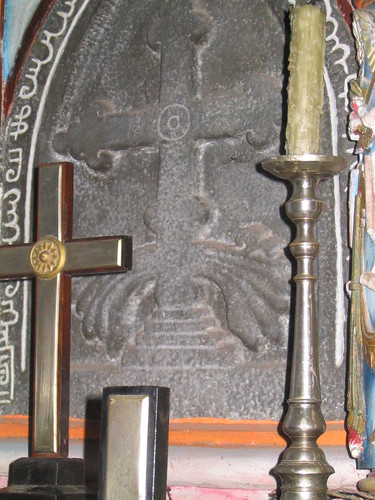Old Churches In Kottayam: we used to be Nestorian ?
First a brief history. The christian community in Kerala has been around for a long time (ever since St.Thomas visited in AD.52 they say). Supposedly, the community was small and struggling until the fourth century when Thomas Knai, a christian from Persia, arrived with his large family and many others. Mr.Knai, by the way, was fleeing persecution from the Zorastrian Sassanid rulers of Persia. Because of active trade in the Arabian sea the church in Kerala kept in moderate contact with the church in Persia (sometimes known as the Nestorians) for the next several centuries. Finally the Portuguese imperialists arrived. On encountering the christians in Kerala they decided that they were heretics who needed to be brought under the authority of the pope in Rome. They were fairly successful in convincing people of this (and catholics are the largest group of christians in Kerala today), but many resisted.
So in 16?? a group of christians took an oath (known as the oath of the Coonan Cross) to resist the Papal advances. They wrote to several orthodox churches (I presume the churches of Alexandria, Antioch, Constantinople etc) for help. By this time their old brothers the Persian church had become weak and 'retreated to the mountains', and the first to reply to their appeals for help were the Syrian Orthodox (also known as the East Syrian Church and disparagingly as Jacobites or Monophysites). [Disclaimer: all these labels come with a lot of theological baggage, and I am in no position to decide their accuracy. I use these terms out of convenience. A lot of my knowledge comes from Samuel Moffett's book A History of Christianity In Asia, which portrays both Nestorians and Jacobites quite sympathetically.] The remaining orthodox christians in Kerala thus came under the hierarchy of the Antiochian patriach. There were a few more theological and political bifurcations of the church (and more european imperial meddling) in the centuries to follow.
Cheriyapally was built around 1575 --- after the Portuguese landed and before the Coonan Cross Oath happened. The general architecture is european --- the facade reminds me of the churches of Goa. So are the murals on the sides of the altar. Some of the more recent murals on the far side of the altar have distinctly Catholic themes (such as the crowning of Mary by the Father,Son and Holy Spirit). Then there is the influence of local Hindu temple architecture --- for example in the wood carvings inside the church, and the oil lamps in the outer wall of the church.
The set of all my photos is here. On my list of places to visit on future trips : the 1000-yr old Thazhathangadi mosque (incidentally Islam also first arrived in India in Kerala via the arabian-sea trade), the St.Thomas Mount church (and Nestorian cross) in Madras, and Kodungallur (or wherever there are older relics of Kerala's christian past).





